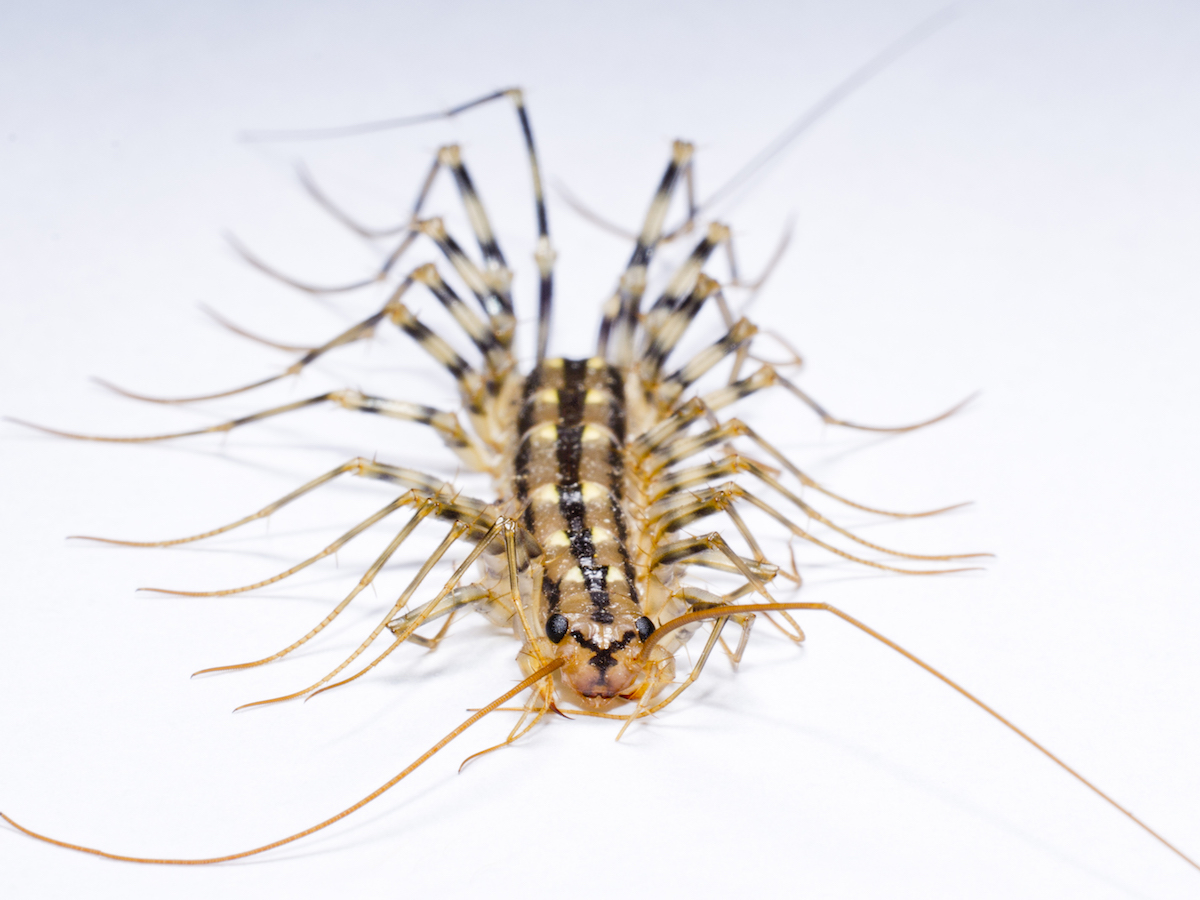Table Of Content

With appropriate fillers, fill or seal cracks and crevices in concrete slabs and block walls. Install window screen in basement floor drains to prevent centipedes from entering from dry sumps. By implementing these house centipede prevention tips, you create an environment that is less appealing to these pests. Prevention is the best way to keep your home centipede-free and more comfortable for you and your family.
Gross: It's House Centipede Time in Connecticut - i95rock.com
Gross: It's House Centipede Time in Connecticut.
Posted: Tue, 18 Oct 2022 07:00:00 GMT [source]
THE BUG MAN: No Way! Blue Centipedes?
This critter is a common household pest, seeking out a moist environment and solid food source in the comforts of your home. While not overly dangerous to people, a centipede might not be a welcomed guest. Although you may not like the sight of house centipedes, they can be helpful in controlling more concerning pests. Getting rid of other pests from your house will go a long way toward reducing the number of house centipedes you see. While house centipedes themselves do not pose health risks, their presence indicates that there are other pests around.
How To Get Rid of a House Centipede Infestation
Millipedes have two pairs of legs per body segment and eat mostly decaying organic matter – roots of plants and leaves. They also like dark moist areas both inside and outside of the home. House centipedes are active hunters, since they don’t build webs or traps. Although this very agile and fast moving, longlegged critter has an unnerving appearance as it darts over walls and floors, it should be considered harmless and no cause for alarm.
Seal up any cracks or leaks
Not only are house centipedes killing the bugs you really don’t want in your house, they also don’t create any nests or webs. They are considered active hunters and are constantly looking for their next prey. Centipedes aren’t eating your wood or carrying a fatal disease. Forcipules are located just behind the centipede’s head and function as venomous appendages used to capture and immobilize prey.
Despite their painful bites, most centipede species in the area aren’t considered habitual home invaders. That being stated, it’s not uncommon for pest management professionals to get calls from residents who find centipedes more than 6 inches inside their home. Oftentimes, houseplants lure centipedes inside, as houseplants attract insect prey and therefore are located within high-moisture regions of a house which are hospitable towards the creatures. – As their name suggests, house centipedes are very common pests that often make themselves at home inside our homes. The house centipede’s name means “one hundred legs” but, depending on the exact species, they can have between 15 and 177 legs.
Clear any leaf litter or wood debris from around the perimeter of your home, especially if it’s damp. A combination of all of these measures is likely to reduce any centipede population you have. The house centipede (Scutigera coleoptrata) is the most common centipede found in the U.S. These centipedes are sometimes referred to as “hundred-leggers,” due to their many pairs of legs. Their bodies are divided into 15 segments, each with a pair of long legs. Other species of centipedes have more legs, but they always have an odd number of pairs of legs.

What Do Centipedes Eat?
Though many people use humidifiers in winter for health reasons, this should not conflict too much with prevention measures, as house centipedes are not generally as active in the winter. Using a dehumidifier in warmer months may make a difference in the number of house centipedes in your home. It is especially important to repair plumbing leaks and keep basement and attic spaces dry.
Super rare and venomous centipede found in home of University of Leicester professor - Leicestershire Live
Super rare and venomous centipede found in home of University of Leicester professor.
Posted: Mon, 22 Jan 2024 08:00:00 GMT [source]
Scutigera coleoptrata
Indoors, Centipedes will stay under shelves, boxes, or other items. If centipedes can find these within an unused room in your house it’s even better. They may be hiding within piles of wood, or under construction equipment that has been left out for a while. Since Centipedes are nocturnal, meaning they are active during the night, centipedes want to be well out of the way and hidden from other animals or humans during the day.
Professional Centipede Removal Services
Most house centipedes are yellowish-gray and have stripes down the length of their body and across their legs, too. While house centipedes can inflict a bite, it is of minor consequence and it rarely does so. When given the chance, house centipedes prefer to quickly retreat from danger rather than bite. You’re most likely to find a house centipede in a dark corner in the basement, although it will wander anywhere it finds moisture.
Although, given their large size, they’re sufficiently strong to cause an unpleasant bite. Although harmless, centipedes can be a nuisance in your basement or bathrooms. Schedule an appointment with an Orkin expert to remove centipedes in your home. We've removed thousands of pests from many homes & businesses across Las Vegas. There are only a few reports of this animal biting people, usually when handled or stepped on with bare feet. If bitten, the wound should be cleaned and antiseptic applied to prevent secondary infection and ice applied to reduce swelling.
It’s a common instinct to kill an insect with this many legs as quickly as possible. The common name of Scolopendra heros is something of a misnomer, because it doesn’t just live in the desert. It has been sighted in Arkansas, southern Missouri, Louisiana, Kansas, Oklahoma, Texas, New Mexico and Arizona.

No comments:
Post a Comment